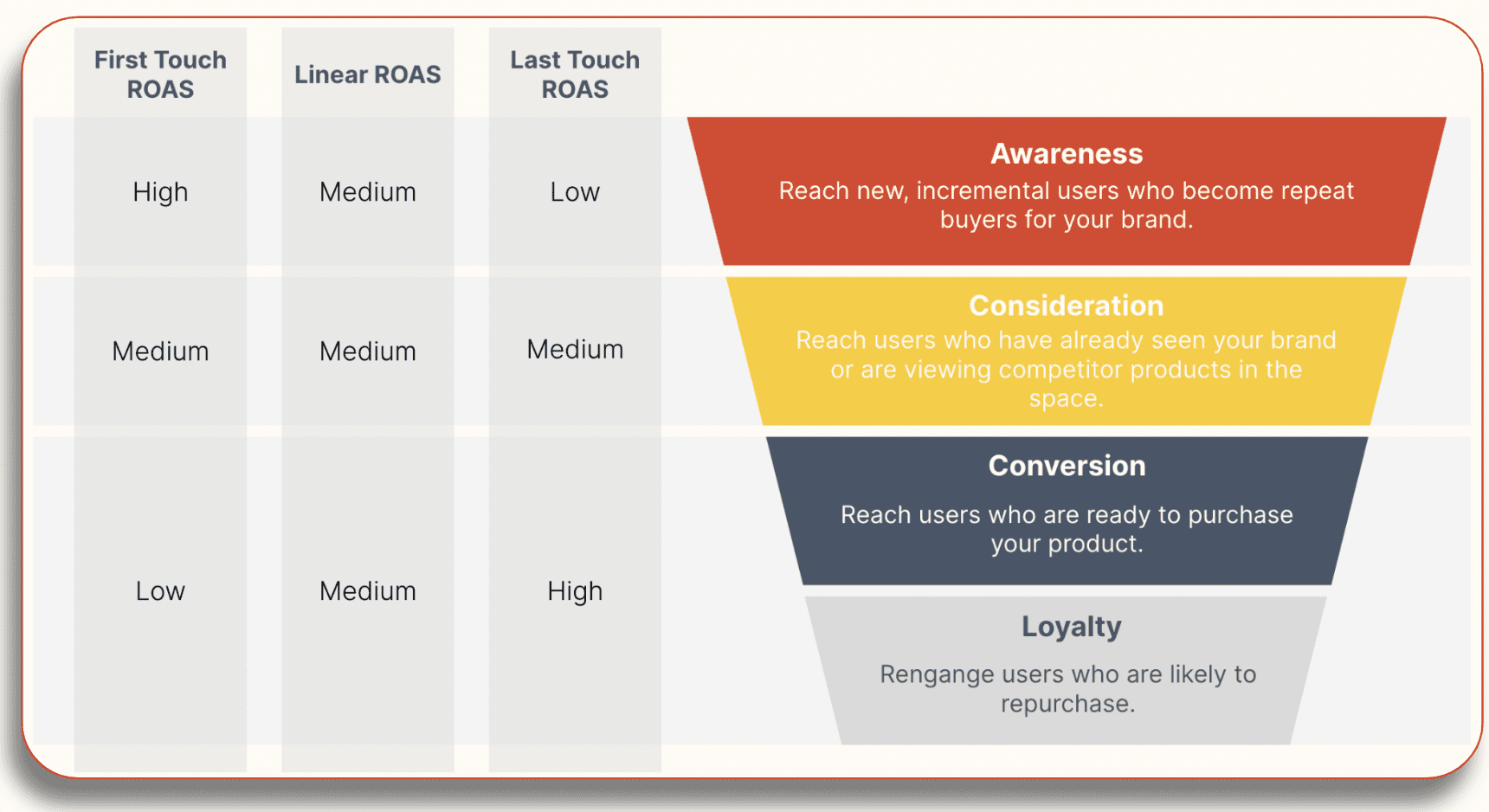June 29, 2024
3 min
What is ROAS?
Return On Advertising Spend (ROAS), calculated as Advertising Sales / Advertising Spend, is relied upon heavily in the advertising world to prove out the effectiveness of a brand's ad campaigns. It evaluates how much the brand is getting in return for every dollar spent on advertising. For example, if the ROAS is $1.2, the brand is making $0.2 dollars for every dollar spent. If the ROAS is $0.8, the brand is actually losing $0.2 for every dollar spent.
Why are there 3 different ROAS numbers in Gigi?
You might be surprised that ROAS can be actually be calculated in different ways depending on the attribution method selected. The Attributed Spend will never change depending on the attribution method but the Attributed Sales will be dynamic.
At Gigi, we focus on 3 different types of attribution models in order to display the effectiveness of a Streaming TV campaign.

Last Touch Attribution ROAS
When reviewing your campaign metrics in an Ad Console, you are likely viewing the Last Touch ROAS. This model ignores all touch points the user had before the very last campaign they interacted with. The last one would be valued at 100% attribution for the Attributed Sale. As Streaming TV Ads are usually not a user's last touch, this devalues the campaign - even if the Streaming TV Ad actually influenced the user to consider and convert on the brand's product.
Linear Attribution ROAS
A Linear Attribution model takes all of the user's touch points into consideration equally. This means that if a user purchased a product for $15 and saw 3 Ads before purchasing, one would divide $15 by 3 to then attribute $5 to each campaign touch point. Now, all the campaigns on the path to purchase will be considered which gives a Streaming TV campaign much more credit, where credit is due.
It is difficult to say that each touch point deserves equal credit if, for example, the Streaming TV campaign introduced the user to the brand and the Sponsored Product campaign allowed the user to convert but the user happened to be quickly exposed to a Sponsored Brand campaign in between, does it really deserve credit? This is really up to the brand to decipher.
First Touch Attribution ROAS
In reverse to the Last Touch Attribution ROAS, we have First Touch Attribution ROAS which means that the sale is only attributed to the very first advertisement the user saw. This can really help value the Streaming TV campaign since users are typically introduced to the brand by this awareness tactic and then moves down the funnel to consider & convert on the brand's product.
Which one should the brand look at?
All of them! It is important to actually evaluate the Streaming TV campaign by comparing all the different ROAS'. When looking at First Touch and Linear ROAS, they should both be higher than the Last Touch ROAS. If First Touch is higher than Linear, the brand then knows that the Streaming TV is doing well in introducing users to the brand. If Linear is higher than First Touch, then the Streaming TV is doing well in assisting other advertisements in the path to purchase. Neither is bad, but one would hope to see the First Touch be highest.
If, in the off chance the Last Touch ROAS is highest, this may mean you need a better consideration and conversion campaign strategy to re-engage more users after their exposure.
What is a good ROAS?
A brand should evaluate ROAS depending on which stage of the consumer buying journey the advertisement is being shown at along with which ROAS is being analyzed. Each stage in the path to purchase should have different expectations of a 'baseline' ROAS.

At Gigi, we are here to focus on the highest part of the funnel where Streaming TV lies, an Awareness tactic. As mentioned before, Linear and First Touch ROAS will show a more favourable ROAS for the brand. If the ROAS is above 1 for these two attribution models, the campaign is bringing in return for every dollar spent on the campaign but Streaming TV campaigns are very expensive and need large budgets thus realizing a ROAS greater than 1 is not likely. So what should the brand expect?
The brand should expect to see the Linear & First Touch ROAS be higher than Last Touch
The brand should expect to acquire mostly new-to-brand users with this tactic which are naturally expensive to acquire but who will hopefully turn into loyal, repeat customers which creates a high Lifetime Value for the brand
With this knowledge in mind, the brand should set a goal ROAS within each attribution model and remember that this is a long-term growth tactic for the company and not an immediate return.
